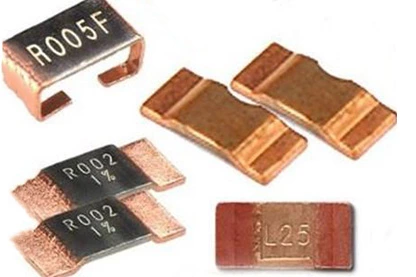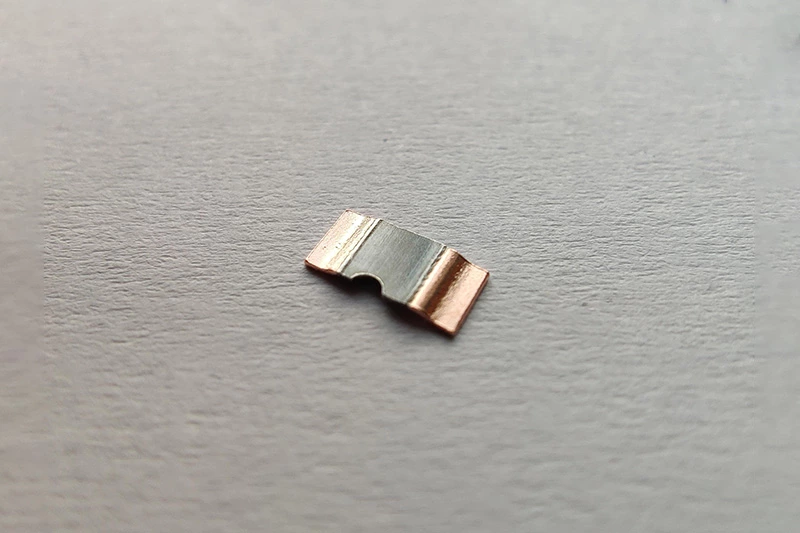Shunt Resistors Vs Hall Effect Sensors: Which Is Better For Current Sensing?
Accurate current measurement is the foundation of every reliable power control system — whether it’s an electric vehicle, battery pack, solar inverter, or industrial power supply.
Among the most popular current sensing solutions are shunt resistors and Hall effect sensors. Let’s explore the key differences and find out why many engineers still prefer metal alloy shunt resistors for precision current measurement.

How Each Technology Works
Shunt Resistor
A shunt resistor measures current indirectly by converting it into a small voltage drop according to Ohm’s Law (V = I × R). The voltage is then amplified and interpreted by a control circuit or ADC (Analog-to-Digital Converter).
- Works for both DC and AC (low frequency) currents
- Delivers direct, linear, and real-time measurement
- Typically made from metal alloy materials such as Manganin or NiCr for high stability
Hall Effect Sensor
A Hall effect sensor measures current through the magnetic field generated around a conductor.
It uses a semiconductor chip to convert magnetic field strength into an electrical signal.
- Can measure AC and DC currents
- Provides galvanic isolation between the current path and the sensing circuit
- Requires external power and signal conditioning circuitry
Comparison: Shunt Resistors vs Hall Effect Sensors
| Feature | Shunt Resistor | Hall Effect Sensor |
|---|---|---|
| Measurement Principle | Voltage drop (Ohm’s Law) | Magnetic field detection |
| Accuracy | High (±0.1% to ±0.25%) | Moderate (±1% to ±3%) |
| Response Time | Fast (microseconds) | Slower (milliseconds) |
| Temperature Stability | Excellent (Low TCR <50 ppm/°C) | Sensitive to temperature drift |
| Power Loss | Low (depends on resistance value) | Minimal |
| Size | Compact, simple design | Bulkier with magnetic core |
| Cost | Low to moderate | Higher |
| Isolation | No isolation (direct measurement) | Built-in galvanic isolation |
| EMI Sensitivity | Immune to magnetic interference | Can be affected by nearby magnetic fields |
| Maintenance | Simple and long-lasting | Requires calibration and drift correction |
Conclusion: Shunt resistors offer better precision, speed, and long-term stability, while Hall sensors provide isolation and magnetic-based measurement suitable for high-voltage environments.
When to Use a Shunt Resistor
Shunt resistors are ideal for applications that demand high accuracy, stability, and cost efficiency.

Typical use cases include:
- Battery Management Systems (BMS) for EVs and energy storage
- DC/DC converters and power supplies
- Solar inverters and renewable energy systems
- Industrial monitoring and motor control
Advantages:
- Extremely precise and linear output
- Excellent temperature stability
- Compact and easy to integrate on PCBs
- Affordable for large-scale production
Metal alloy shunt resistors are especially effective where precision and long-term reliability are essential.
When to Use a Hall Effect Sensor
Hall sensors are better suited for applications that require electrical isolation or non-contact measurement, such as:
- High-voltage power lines
- Motor drive systems where physical connection is not possible
- Complex systems needing both AC and DC current sensing
Advantages:
- Provides safe galvanic isolation
- Works with high-voltage or high-current circuits
- Measures both AC and DC signals
Limitations:
- Lower accuracy and slower response
- More expensive and sensitive to magnetic interference

Why Metal Alloy Shunt Resistors Stand Out
Modern metal alloy shunt resistors are engineered to overcome the traditional drawbacks of temperature drift and long-term instability. They feature:
- Low TCR (<50 ppm/°C) for thermal stability
- Excellent long-term resistance stability
- High surge and overload capability
- Minimal thermal EMF for clean signal output
These advantages make them the preferred solution in EVs, BMS, energy storage, and industrial systems worldwide.
Final Thoughts
Both shunt resistors and Hall effect sensors have their place in current sensing — but when it comes to precision, reliability, and cost-effectiveness, metal alloy shunt resistors are hard to beat.
They deliver accurate, real-time current measurements that power the efficiency and safety of today’s most advanced electrical systems.
If you’re designing a power control or monitoring circuit, start with the most trusted solution a high-precision metal alloy shunt resistor.